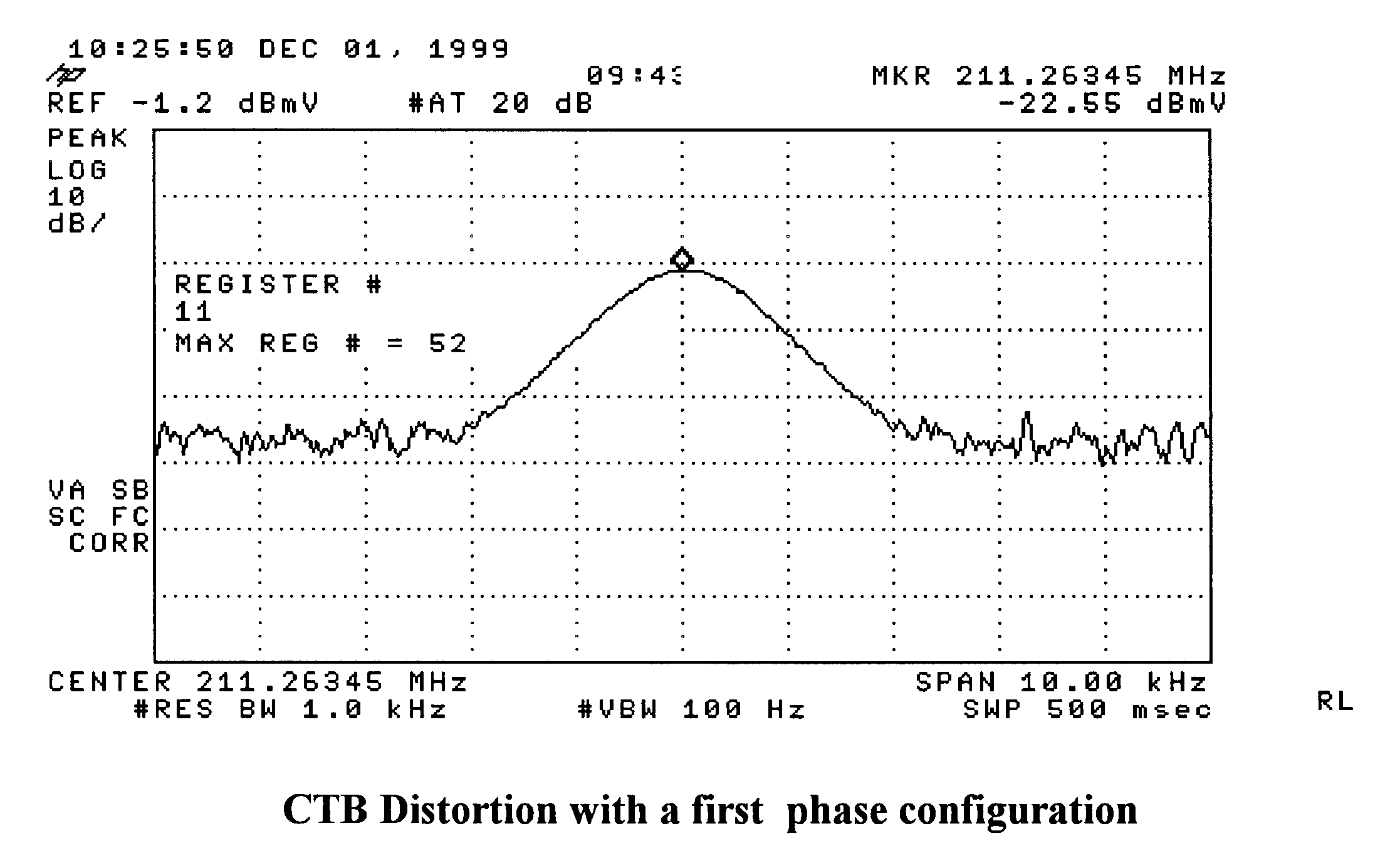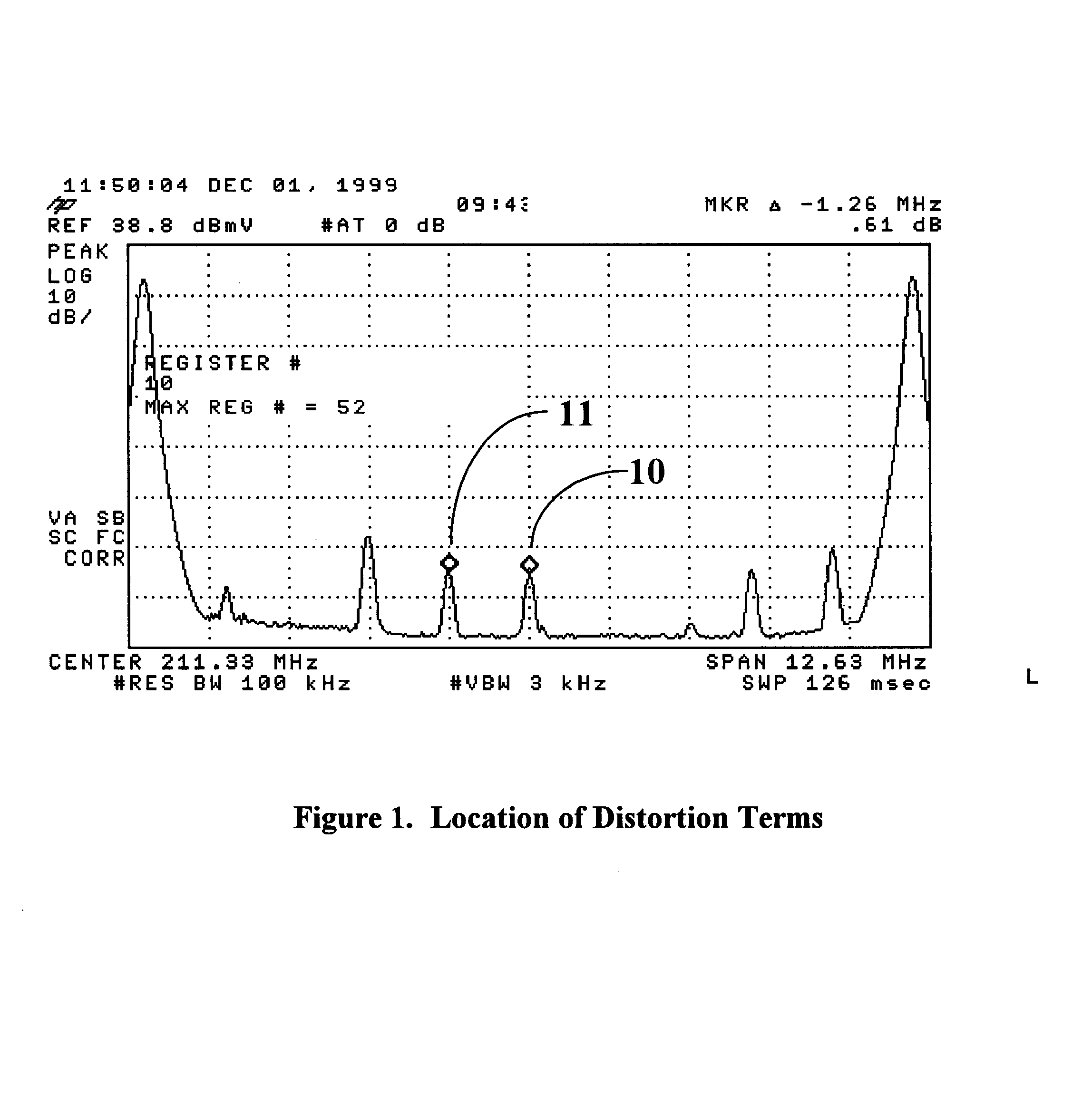Measuring composite distortion using a coherent multicarrier signal generator
- Summary
- Abstract
- Description
- Claims
- Application Information
AI Technical Summary
Benefits of technology
Problems solved by technology
Method used
Image
Examples
Embodiment Construction
The present invention utilizes a coherent MCG with ultra low phase noise and with affirmative phase control for each carrier over an ensemble of carrier phase configurations. The techniques for generating multicarriers wherein specific phase control for each carrier can be effected have been disclosed in the '799 Patent. The measurement setup in accordance with the invention is shown in FIG. 2. Phase configuration control is effected by the PC console controlling the Phase Controlled MCG. The PC Console also controls the spectrum analyzer via the GPIB bus line. Focusing now on a specific distortion term, FIG. 3 and FIG. 4 depict two measurements of on-channel CTB distortion using an apparatus of the present invention. The two measurements were obtained under different carrier phase configurations. There are several items worth emphasizing in these figures:
Note the low RBW setting. The distortion terms are indeed CW terms that permit the reduction in resolution bandwidth, now limited...
PUM
 Login to View More
Login to View More Abstract
Description
Claims
Application Information
 Login to View More
Login to View More - R&D
- Intellectual Property
- Life Sciences
- Materials
- Tech Scout
- Unparalleled Data Quality
- Higher Quality Content
- 60% Fewer Hallucinations
Browse by: Latest US Patents, China's latest patents, Technical Efficacy Thesaurus, Application Domain, Technology Topic, Popular Technical Reports.
© 2025 PatSnap. All rights reserved.Legal|Privacy policy|Modern Slavery Act Transparency Statement|Sitemap|About US| Contact US: help@patsnap.com



